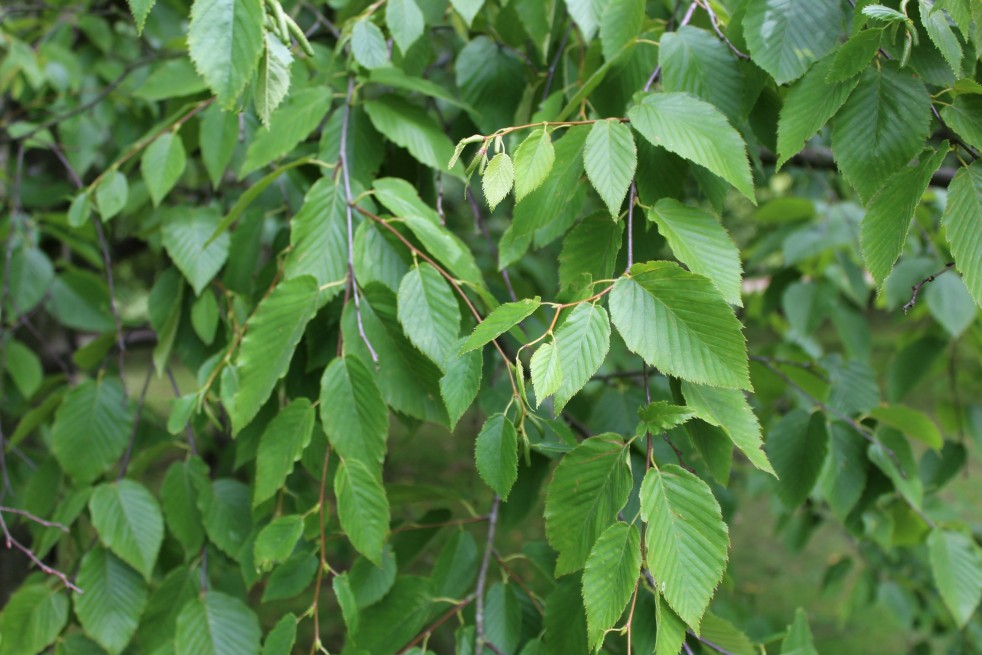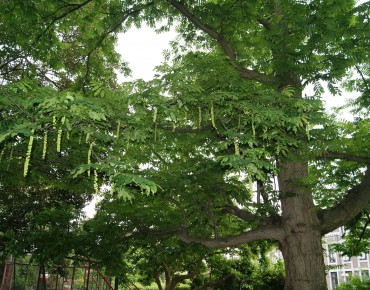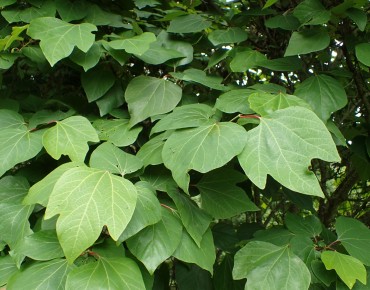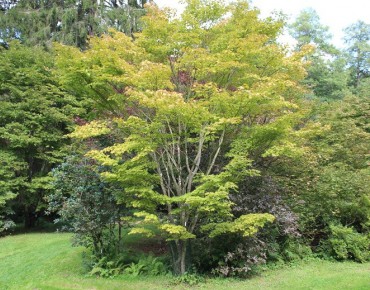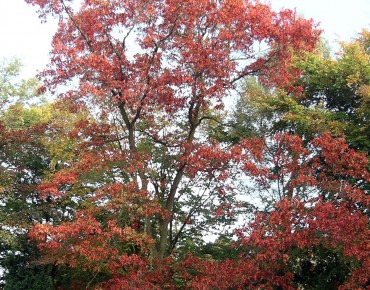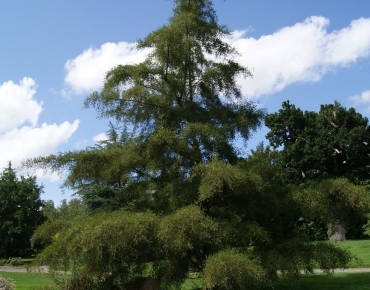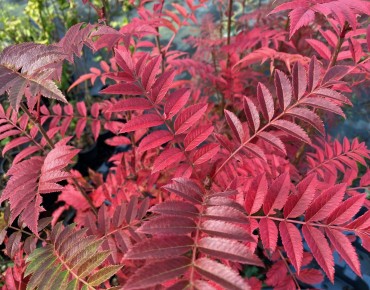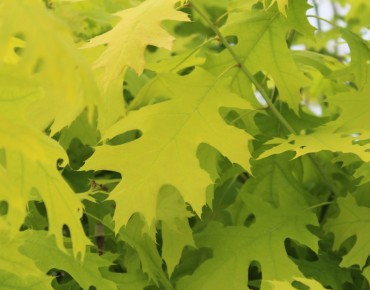Sweet birch
Betula lenta
Description
Betula lenta, also called sweet birch, black birch, cherry birch, mahogany birch or spice birch, is a tree native to eastern North America. It has several points of attraction.
The bark of Betula lenta is rich in methyl salicylate, a substance with analgesic and anti-inflammatory properties. An essential oil can be extracted from it, which is used to relieve muscular and rheumatic pain, but also to flavor confectionery and perfumes. The bark is dark brown to blackish, smooth in young subjects, then cracks in adults, it does not exfoliate. The 5 to 10 cm leaves are oval, toothed, dark green above and lighter below. They give off a pleasant smell when you crush them. The autumn foliage is a magnificent golden yellow, very bright, which is noticeable from afar.
The Betula lenta is a medium to large sized tree, which can reach 20 to 25 m in height in its natural environment, its size in our gardens is limited to approximately 15 m, and 9 to 10 m in spread. It has a slender, columnar shape in its young years, then widens over time. It produces flowers in greenish catkins 1.5 cm long from mid-April. The fruits are cylindrical cones that contain winged seeds. The Sweet birch likes cool, humus and well-drained soils. It tolerates limescale and drought. It prefers a sunny or semi-shaded exposure. It resists cold down to -25°C.
Betula lenta is preferably planted in autumn or spring, avoiding periods of frost or drought. You must give it enough space so that it can develop without disturbing other plants. It is necessary to water the young tree regularly during the first two years, then reduce the water supply thereafter. It is not necessary to prune it, except to remove dead or diseased branches. You must watch for attacks by aphids, caterpillars or fungi which can affect its foliage or bark. The Sweet birch can be used as an ornamental tree, isolated or in groups, in a large garden or park. It can also be planted in alignment along a driveway. It offers a magnificent spectacle in spring with its catkins and young reddish to mahogany branches, and in autumn with its bright golden foliage.
Features
- Common name : sweet birch, black birch, cherry birch, mahogany birch, spice birch
- Family : Betulaceae
- Category : tree
- Spread : 9 m
- Foliage : deciduous
- Use : isolated - shrubberry - alignment
- Soil : rich and well-drained
- Habit : Columnar
- Growth : Fast
- Earth to use : universal potting soil/garden soil/compost
- Enemies : aphid - sawfly
- Possible diseases : rust disease - powdery mildew - armillaria
- Date of last repotting : 10/12/23
- Photo taken : Botanical garden of Meise - Belgium
Expédition & livraison
How does the delivery work?
 As soon as you place your order your plants are selected
As soon as you place your order your plants are selected Each order is processed individually.
Each order is processed individually. Plants are packed, staked and labeled.
Plants are packed, staked and labeled. Packaging is carefully implemented to avoid any problems.
Packaging is carefully implemented to avoid any problems. Packages are ready to be shipped.
Packages are ready to be shipped.
Our delivery methods
Shipping of our plants throughout Europe (except overseas and islands).
Customer reviews

